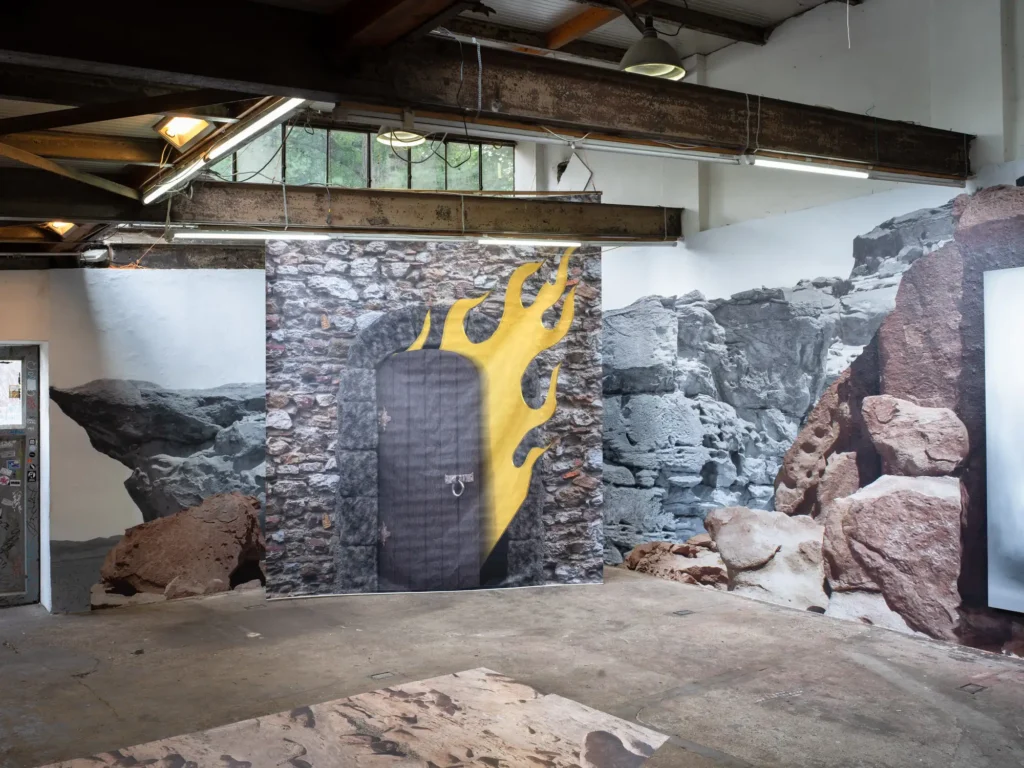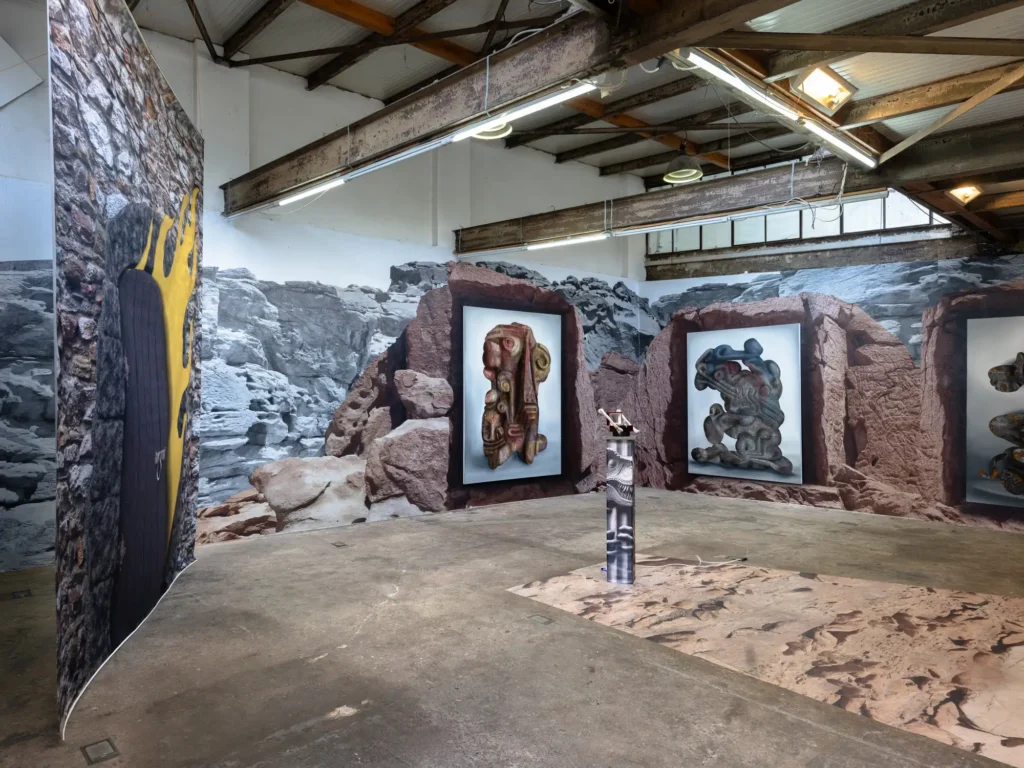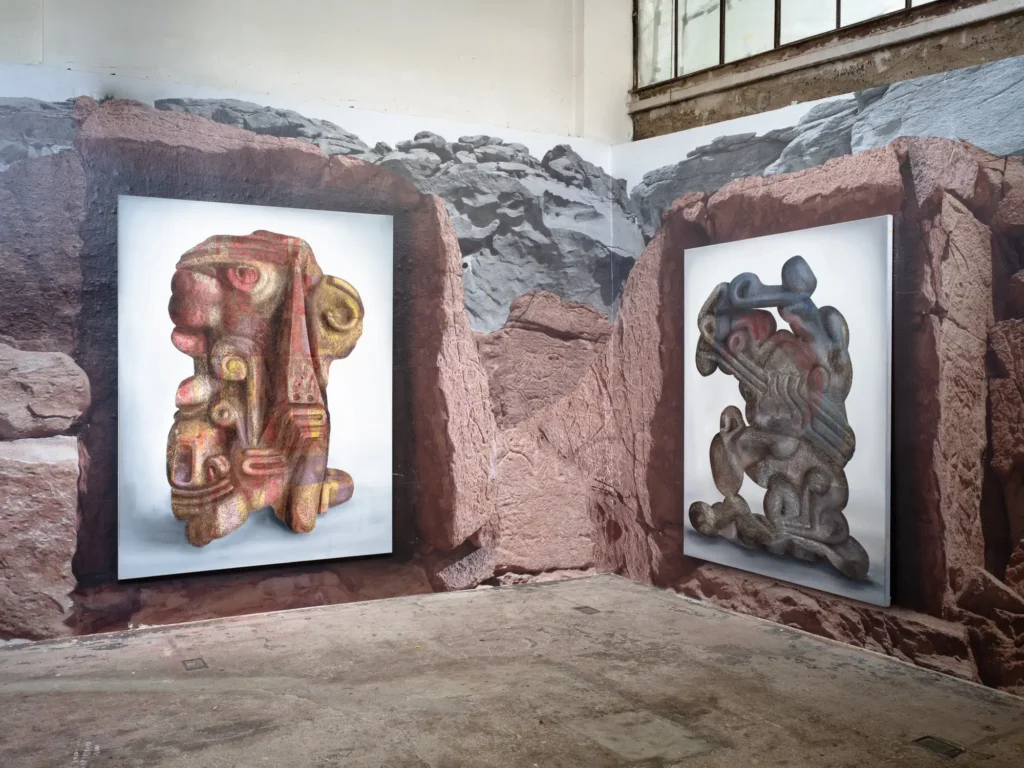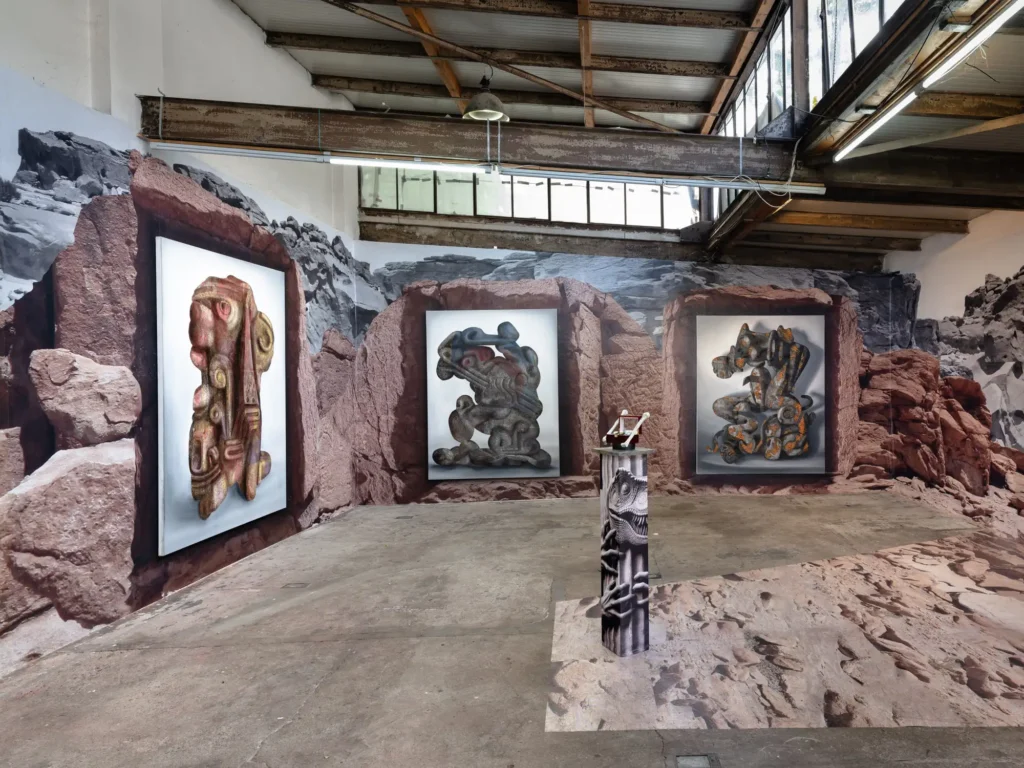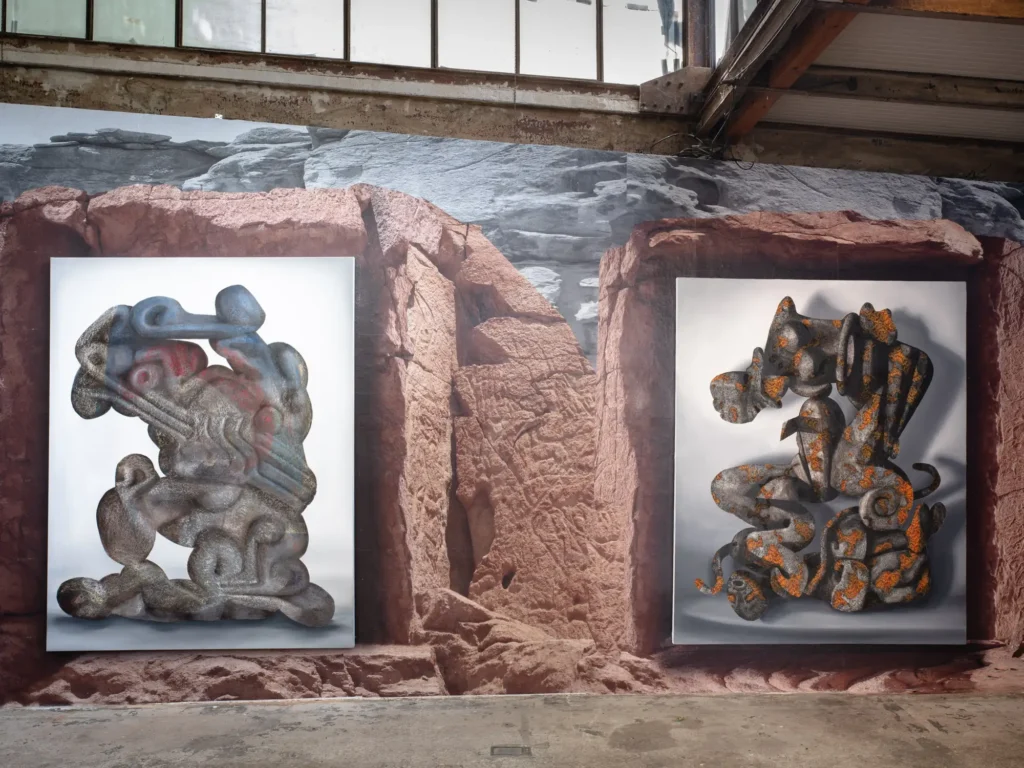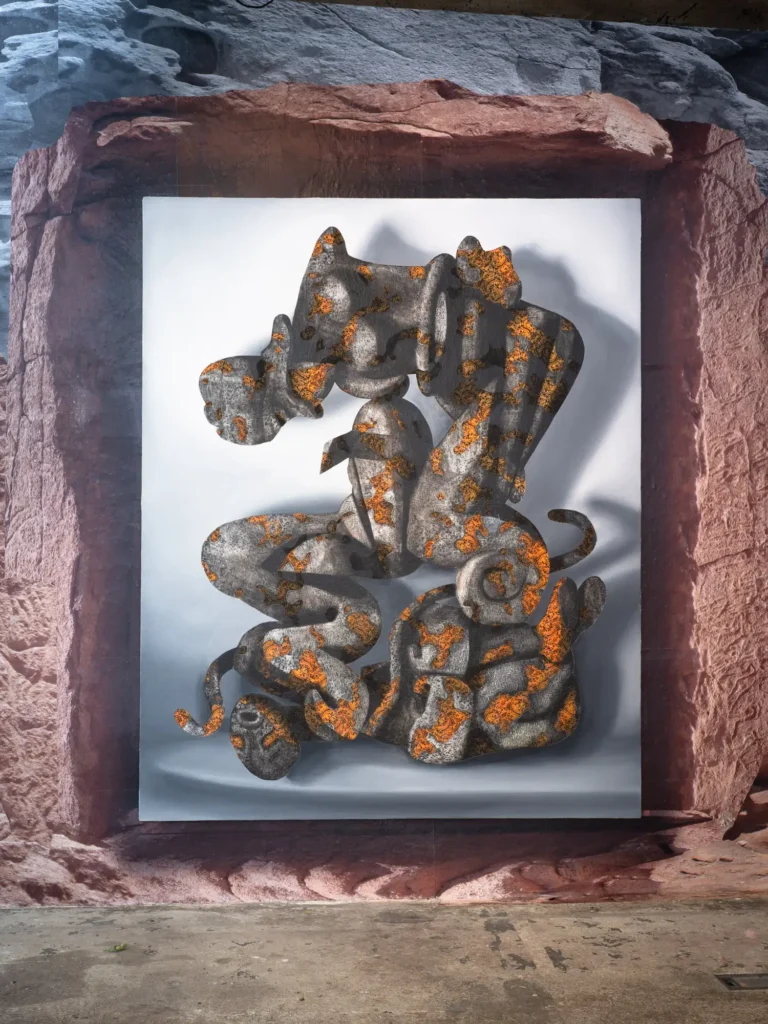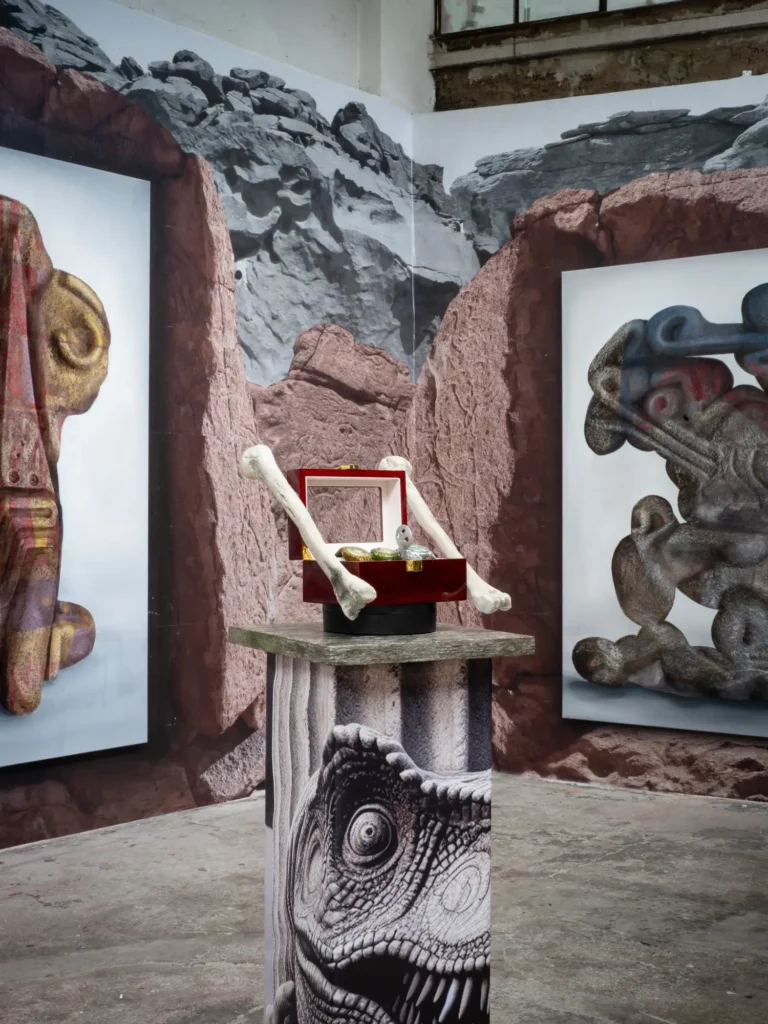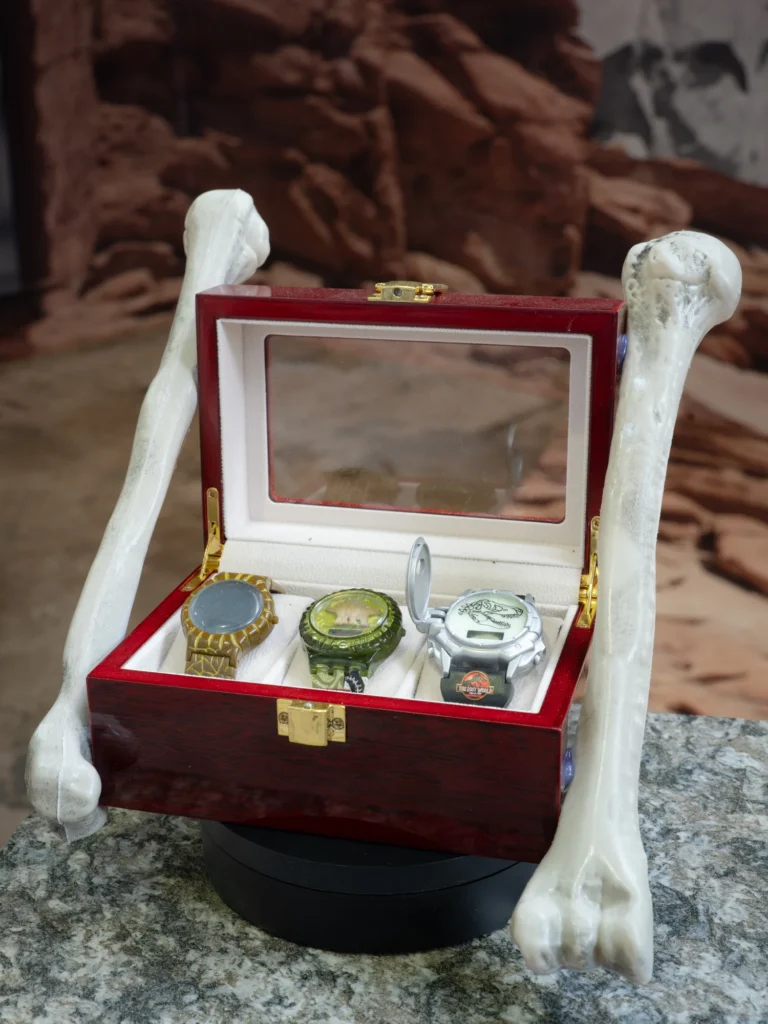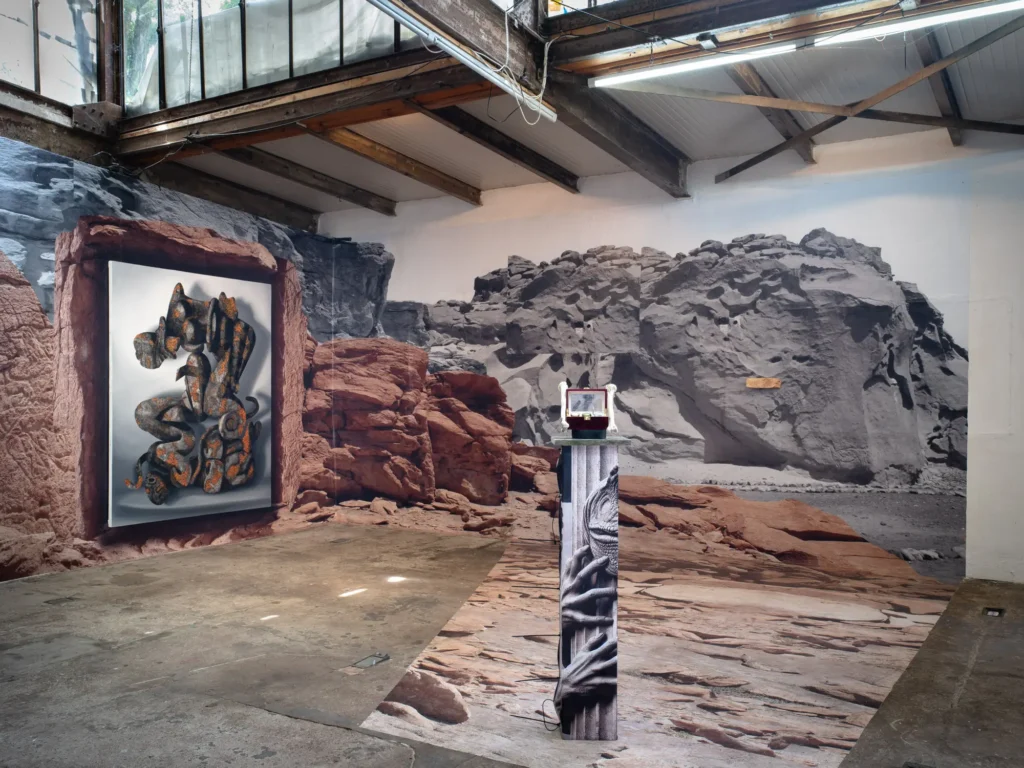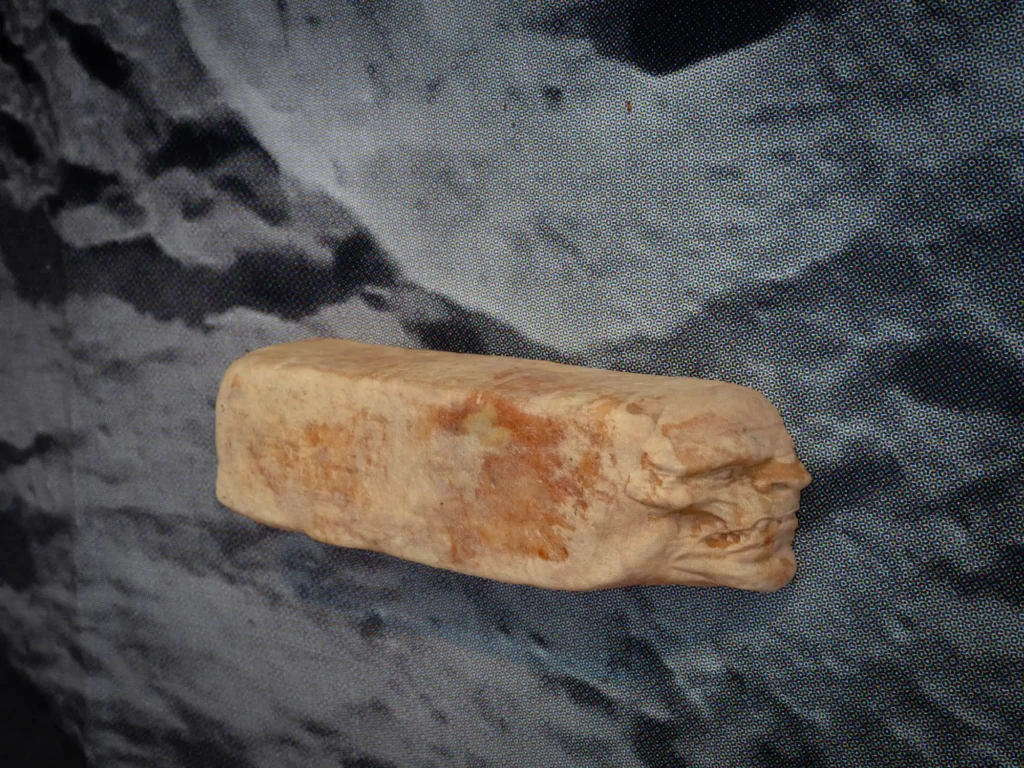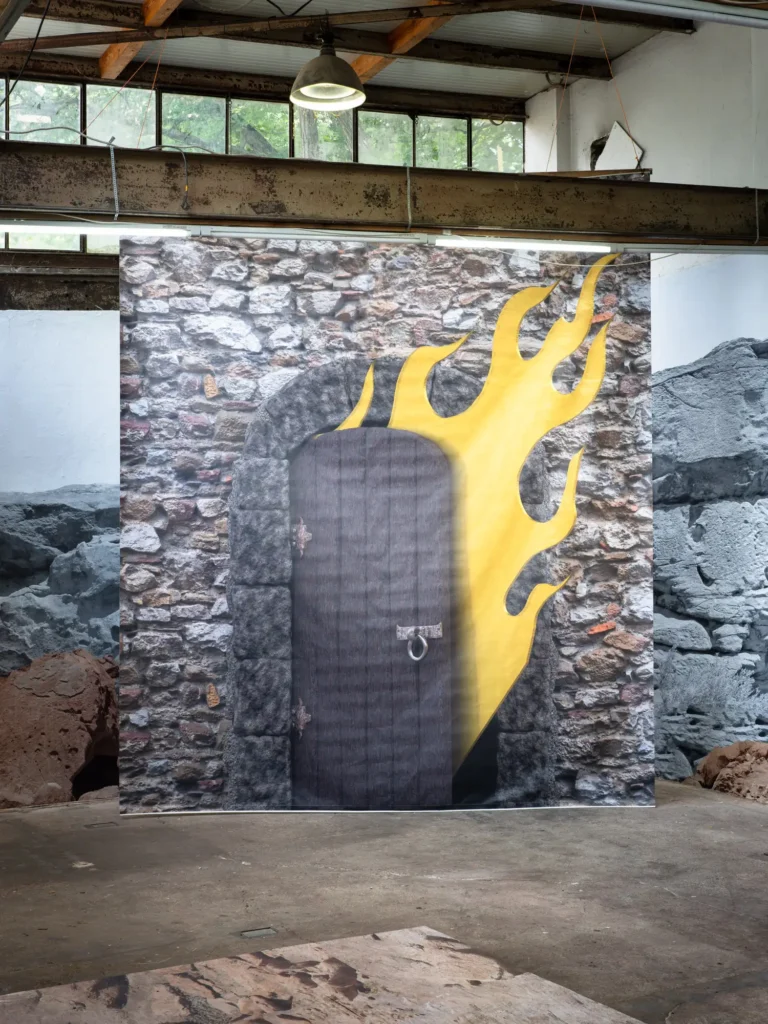Alabaster
Wilhelm Frederking & Willy Schulz
C.Rockefeller Center for Contemporary Arts
Dresden, Germany
16.05. – 29.05.2024
Photos: © Felix Adler
Paintings, wallpaper design: Wilhelm Frederking
Used photos for wallpaper: Catalina Rammirez Venegas
Object, sculpture, plane, text: Willy Schulz
Alabaster
Alabaster plays a fascinating role in the history of art. It has been used for masterful sculptures since antiquity, from the elegant statues of ancient Egypt to the refined altarpieces of the Middle Ages. Its soft texture allowed for intricate details and its translucency gave the works a special shine. Alabaster was often used in sacred contexts and contributed to the dissemination of religious iconography, while also serving as an expression of luxury and sophistication, particularly in the Renaissance and later periods.
In the duo exhibition “Alabaster” at the C. Rockefeller Center for Contemporary Arts Dresden, artists Willy Schulz and Wilhelm Frederking present a fascinating synthesis of conceptual art and painting. Frederking immerses himself in past worlds in his large-format paintings by transforming historical artifacts into monumental presences. In doing so, he challenges the conventions of history and art and encourages reflection on Eurocentric perspectives. Frederking's fascination with lost worlds is particularly remarkable, manifesting itself in his works and inviting the viewer to rediscover lost histories and contexts.
Willy Schulz, on the other hand, explores the complexity of everyday life and the limits of materiality in his sculptures and installations. His works emerge from an unpredictable process that interweaves intuition and social observation. Schulz translates the everyday into new contexts, creating unexpected connections between objects and viewers. Through the ingenious use of synthetic resins and pigments, he lends his works an illusionary quality that oscillates between refinement and robustness and turns the surface of the sculptures into a mirror of our own perception.
“Alabaster” invites us to see the world through the eyes of Schulz and Frederking, two artists whose works not only appeal to our senses, but also challenge our minds and expand our ideas of the past, present and future.
